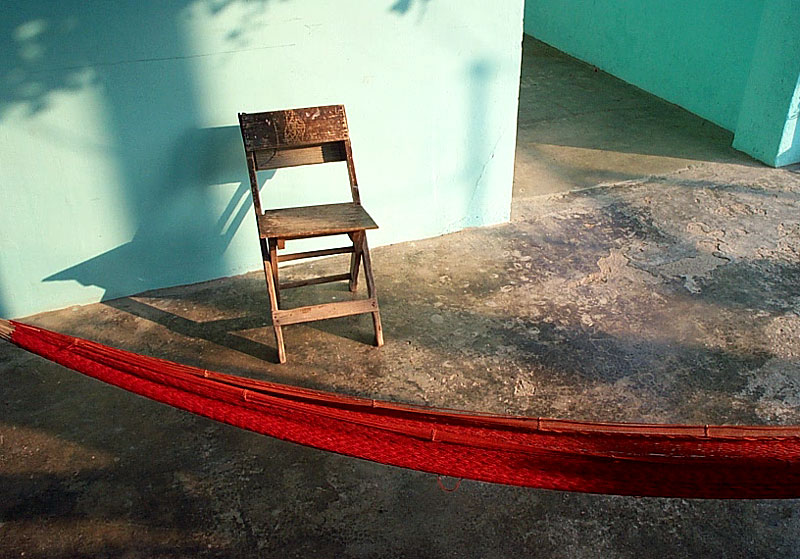 Evolution & Behaviour
Evolution & Behaviour
Lab-life: the afternoon siesta of the fruit fly

"The early bird catches the worm" it's a simple enough idiom that we've all heard. But to a circadian biologist - a scientist studying 24 hour rhythms - that idiom leads to all manner of further questions: how does the bird know when to get up, are there early worms that escape the bird, and why aren't all birds early? It's a question we can all relate to: why are some people early risers, others night owls, and teenagers stuck in bed till midday?
It turns out that our bodies have a "clock" that accurately tells the time, and which organises all sorts of physiological processes to keep them in synchrony with the day/night cycle. Importantly, the body clock can be reset to accommodate changes in seasonal day length or transcontinental travel, although the latter takes several days, during which our body clocks are out of synchrony with our environment and we experience the nauseous symptoms commonly known as jetlag.
The field of circadian biology took off in the late 1960s when Ron Konopka and Seymour Benzer studied the body clock of the fruitfly Drosophila melanogaster, a species beloved by lab-based biologists for its well-understood genetics, ease of culture, and diverse range of behaviours1. Like humans, animals do the same thing at more or less the same time of day (or night in the case of nocturnal animals), and this holds true even for the tiny fruitfly. In a simple laboratory setup of constant temperature interspersed with regular periods of 12 hours of light and dark, fruitflies are active in the morning and evening, but have a rest or "siesta" in the middle of the day.
This rather artificial laboratory environment has underpinned forty years of experiments that have identified the genes that act as the mechanical gears of the clock, as well as the neurons dedicated to controlling these behavioural rhythms. Perhaps unsurprisingly it was shown that natural selection favours animals or bacteria (which surprisingly also have circadian clocks) with functioning clocks over animals with non-functioning clocks.
So it was a something of a surprise when Kyriacou and colleagues2 reported that when recording the activity of flies in the wild during an Italian summer, fruitflies are actually most active during the period in which in the laboratory they would normally be having a siesta, calling into question much of the previous research. Interestingly, around the same time results from field experiments using mice showed that in the wild mice were diurnal, not nocturnal as they are under artificial laboratory regimes3, again contradictory to years of laboratory work.
We decided to address these apparently conflicting results by attempting to simulate the natural environment in the laboratory much more accurately than had previously been attempted. This involved the use of sophisticated temperature controlled incubators and custom built arrays of LEDs that could accurately match the slow changes in light intensity, colour and temperature of an Italian summer's day. Furthermore we took advantage of technological advances in video tracking to record the behaviour of the flies moving around in mixed-sex groups within large 15 cm dishes, allowing much freer movement more similar to the flies' natural habitat where they swarm over rotting fruit.
The results4 unequivocally confirmed that under these "natural-like" conditions, flies were indeed active during the warm summer afternoons. But as so often in science, what appeared to be a spanner in the works proved to be the tool to solve the problem: using our new incubator setup we screened a range of mutants to find out which genes were required for this afternoon activity. It turned out that flies lacking the nociceptor gene TrpA1 never showed an afternoon peak of activity. Nociceptors such as TrpA1 are the body's pain receptors responding to intense light or heat, suggesting that the 35 °C peak afternoon temperature was sufficiently stressful to override the flies' body clock preference for a siesta.
So, if you're a scientist interested in early birds, experiments that look like a can of worms can turn out to be the tasty result you're looking for!
Original Article:
Green E, O’Callaghan E, Hansen C et al. Drosophila circadian rhythms in seminatural environments: Summer afternoon component is not an artifact and requires TrpA1 channels. Proceedings of the National Academy of Sciences. 2015;112(28):8702-8707. doi:10.1073/pnas.1506093112.Next read: Our internal fight against loneliness by Gillian Matthews
Edited by:
Dr. Carlos Javier Rivera-Rivera , Managing Editor
We thought you might like
The lingering effects of parental care and its role in evolutionary change
Jan 27, 2016 in Evolution & Behaviour | 4 min read by Rebecca KilnerChimpanzees Trust Their Friends
Apr 14, 2016 in Evolution & Behaviour | 3.5 min read by Jan EngelmannAmoebas trap bacteria using nets of DNA: the same mechanism as human immune cells
Jan 27, 2017 in Evolution & Behaviour | 3.5 min read by Lukáš NovákMore from Evolution & Behaviour
Rudimentary form of syntax present in chimpanzees
Nov 29, 2023 in Evolution & Behaviour | 3 min read by Maël LerouxAn incredibly massive ancient whale skeleton reveals a new way to become a giant
Nov 27, 2023 in Evolution & Behaviour | 4 min read by Olivier LambertVikings and Migrants: Unravelling Scandinavia's Genetic Mosaic in the Viking Era
Nov 13, 2023 in Evolution & Behaviour | 3 min read by Anders Götherström , Ricardo Rodríguez VarelaFish identify themselves in mirrors and portraits
Oct 18, 2023 in Evolution & Behaviour | 3.5 min read by Masanori Kohda , Satoshi Awata , Shumpei SogawaEditor's picks
Trending now
Popular topics


